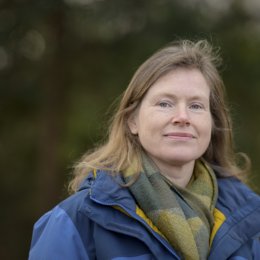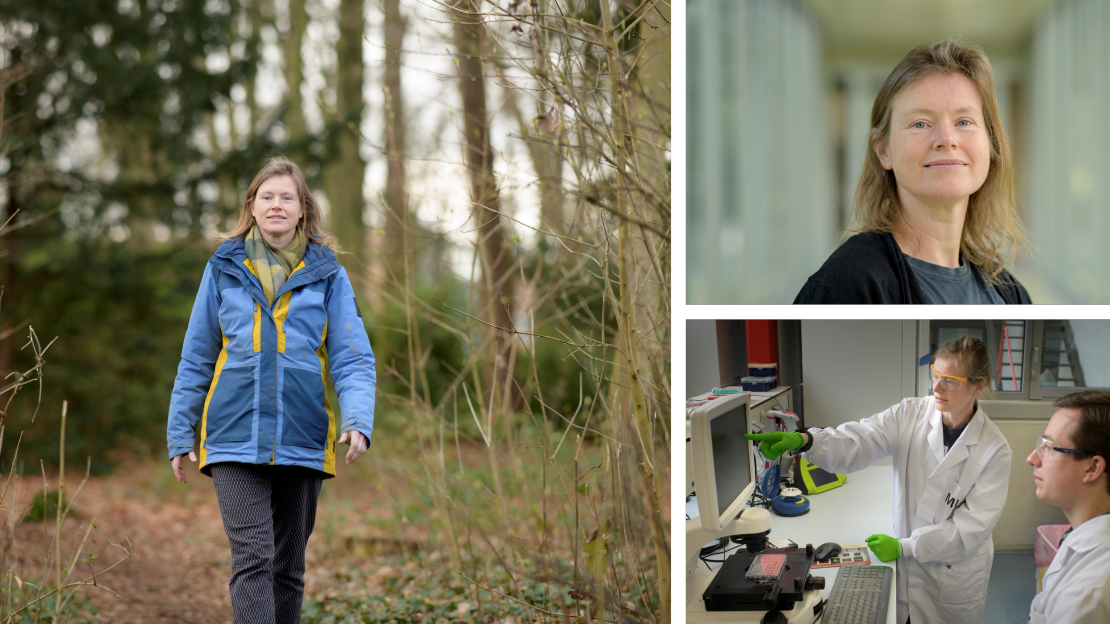Solving the enigma of the gut-brain connection
Kerensa Broersen researches the link between our brain and our ‘second brain’, the gut, to battle diseases such as Parkinson’s, schizophrenia and brain stem cancer.
Kerensa Broersen works as an associate professor in the Applied Stem Cell Technologies group. She spent years studying Alzheimer’s disease, but her focus has since shifted to the special connection between the brain and the gut or gastrointestinal system. ‘There are numerous clinical studies demonstrating that our gut and, more specifically, the bacteria in our gut affect the workings of our brain. But we still don’t know exactly how that gut-brain connection works,’ Broersen explains.
In an attempt to unravel that mystery, she uses a technique known as organs-on-chips (OoCs): organs made from stem cells grown inside microfluidic chips. ‘We make mini-organs of the intestines, the brain and the vagus nerve, which is the nerve pathway that connects the brain stem to the intestines. We then transfer those miniature tissues onto a microfluidic chip,’ she continues. ‘Once transferred, we can mimic the organs and the connection between them and tinker with the mini-intestines and brain in all sorts of ways. The sensors on the chip allow us to measure the impact of these interventions. In Parkinson’s disease, for instance, we know that there is a decrease in certain cells in the brain which coincides with a shift in the composition of the intestinal flora. But is it possible for us to simulate that process? If so, we would be able to understand a disease like Parkinson’s far better.’
Broersen sees this as the essence of her research: slowly but surely gaining insight into how the body functions, all the way down to the cellular level. 'After all, a deeper understanding of our physiological systems might help us identify the onset of brain disorders such as Parkinson’s, schizophrenia, depression and brain stem cancer or improve their treatment.'
Education
Broersen teaches students from a range of scientific backgrounds, including students of Technical Medicine, Biomedical Engineering and those attending University College Twente. ‘The fundamentals of cell biology are concepts that I mainly explain to first-year students. But I also supervise a large number of graduate students, since the demand for research on OoCs is high.’
What she likes best about teaching is the astonishment expressed by her students. ‘Students are often gobsmacked by what we can do with technology. I even feel that way myself sometimes. Just recently, I was stunned when a PhD student showed how the nerve pathway grows into the brain.’
Although her lectures primarily focus on the biological building blocks, she does her best to instil a sense of wonder. ‘Sometimes you can’t avoid explaining the more boring material and you’ll notice students gazing blankly out the window. But even from the basics, remarkable things can emerge. Like the scientist who was so curious about energy production in cells when he saw pigeons flying outside that he put those same pigeons in a blender to find out what substances were at play. A story like that will prick up anyone’s ears,’ she jokes.
About Kerensa Broersen
Kerensa Broersen graduated from Amsterdam University of Applied Sciences (AUAS) in 1997, majoring in Nutrition and Dietetics. She then went to the UK and completed a Master’s in Nutrition and Food Management at the University of Huddersfield, followed by a PhD in Food Chemistry at Wageningen University & Research and a postdoc in Neurobiology at the Medical Research Council Laboratory of Molecular Biology in Cambridge. Kerensa Broersen has worked at the University of Twente since 2011, initially joining the Nanobiophysics group, and later, from 2019, becoming part of the Applied Stem Cell Technologies group. In 2022, she was awarded a prestigious Vici grant of 1.5 million euros by the Dutch Research Council (NWO).
Press photos
These press photos can be used, please include the name of the photographer, Fokke Eenhoorn.


